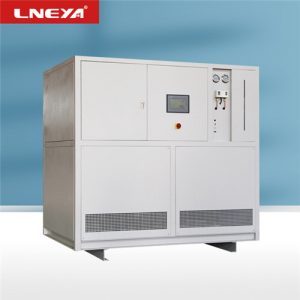What are the decarboxylation reaction conditions and process temperature control?

The decarboxylation of aromatic acids is easier than that of fatty acids. For example, benzoic acid can be decarboxylated by adding a little copper powder as a catalyst in quinoline solution and heating.
When a strong electron-withdrawing group is attached to the α-C of the carboxylic acid, heating can make it decarboxylate more smoothly. For example: when the ortho-diaromatic organic acid is heated, it is easy to remove a carboxyl group, but when the temperature is low, an acid anhydride will be formed. When different polycarboxylic acids are heated, according to the different activities, some are decarboxylated, some are dehydrated, some are decarboxylated and dehydrated again, dehydration above pimelic acid, and general decarboxylation below.
Fatty acid: This reaction is generally not used to prepare alkanes for general fatty acids, especially long-chain fatty acids, because the reaction temperature is too high, the yield is low, and it is not easy to separate. However, if the α-carbon atom of the fatty acid has an electron-withdrawing group such as nitro, halogen, carbonyl, cyano, etc., it makes decarboxylation easy and the yield is high, but their reaction processes are not exactly the same.
The general decarboxylation reaction does not require a special catalyst, but is carried out under the following conditions: (1) heating; (2) alkaline conditions; (3) coexistence of heating and alkaline conditions. The most commonly used decarboxylation method is to heat the sodium salt of carboxylic acid with soda lime (CaO + NaOH) or solid sodium hydroxide, and a decarboxylation reaction occurs, that is, -COONa is replaced by an H atom to generate a carbon atom less than the sodium carboxylic acid salt alkanes.
It can be seen that no matter the decarboxylation reaction of any substance, it is necessary to carry out temperature heating control during the reaction process. LNEYA specializes in the production and development of heating systems, with a temperature control range of 50 degrees to 300 degrees, which is suitable for the needs of pharmaceutical and chemical companies in various process production and experimental use. It can realize high temperature cooling process, directly cooling from high temperature of 300 degrees to 50 degrees. Equipped with a heating and cooling integrated container, the heat exchange area is large, the heating and cooling rate is fast, and the demand for heat transfer oil is small. The entire cycle of the product is closed, there is no oil mist volatilization at high temperature, and the heat transfer oil will not be oxidized and browned; it has the function of correcting the internal cycle temperature probe PT100, and has self-diagnosis and intelligent safety alarm. The equipment is equipped with a variety of safety protection functions such as high-voltage pressure switches, overload relays, and thermal protection devices to ensure the safety of your experiments and production.
관련 권장 사항
-
영하 30℃에서 저온 제어 장비의 일일 점검 시 주의 사항
1114영하 30도의 저온 제어 장비는 냉동 장치 또는 냉장 장치라고도 합니다. 냉각기와의 차이점은 온도 범위입니다. 그것은 산업에서 일반적으로 사용되는 저온 장비입니다 ...
세부 정보 보기 -
반도체 온도 테스트 시스템 적용 범위 설명
1535The semiconductor temperature test system is LNEYA's new device for semiconductor chip testing. So what range does the semiconductor temperature test system apply? Users need to understand the specific application range to select the appropriate s...
세부 정보 보기 -
온도 충격 테스트 장비의 고온 고장 처리
1085우시 구아냐 LNEYA 열충격 테스트 챔버의 전체 기능은 컴퓨터로 제어됩니다. 우수한 작동 인터페이스를 갖춘 자체 개발 소프트웨어로 사용자의 작동 및 모니터링을보다 간단하고 직관적으로 만듭니다. 메인 ...
세부 정보 보기 -
Description of requirements for installation of glycol chiller
1021Generally, after purchasing the equipmentwith the glycol chiller manufacturer, the installation manual will bedistributed to the user together. So, what should be paid attention to wheninstalling the glycol chiller?In summer, glycol chillers ar...
세부 정보 보기
 LNEYA 산업용 냉각기 제조업체 공급 업체
LNEYA 산업용 냉각기 제조업체 공급 업체














